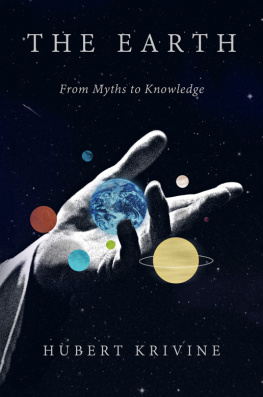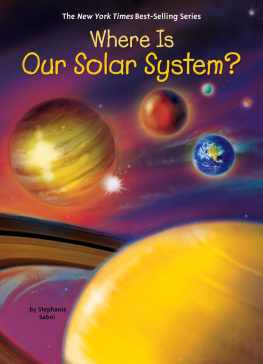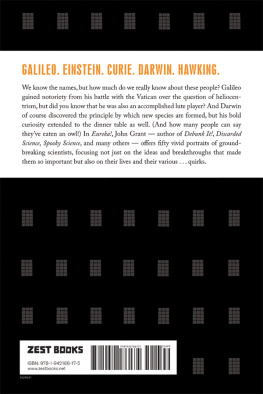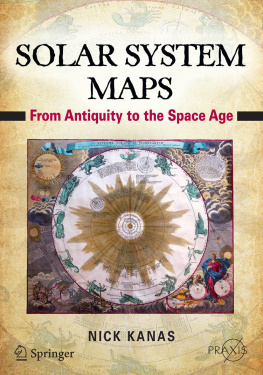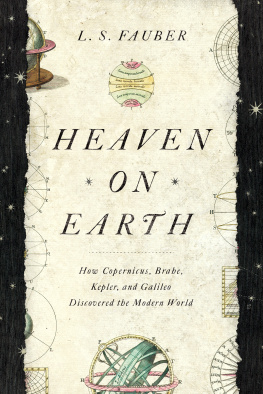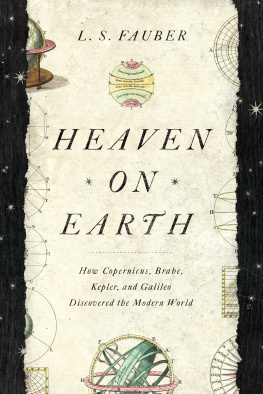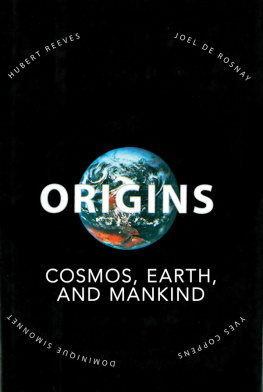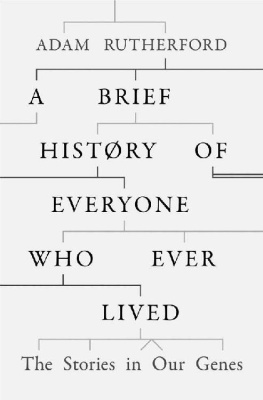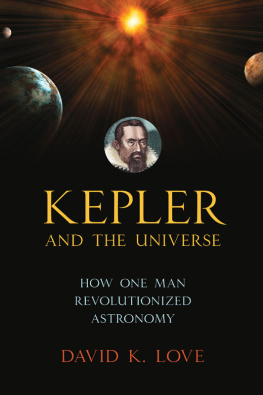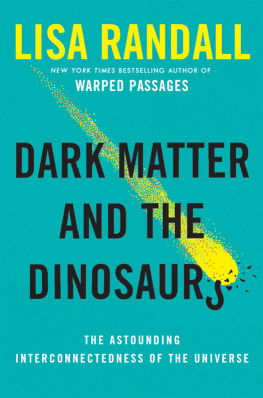THE EARTH
FROM MYTHS TO KNOWLEDGE
HUBERT KRIVINE
FOREWORD BY TARIQ ALI
AFTERWORD BY JACQUES BOUVERESSE
TRANSLATED BY DAVID FERNBACH

This English-language edition first published by Verso 2015
Translation David Fernbach 2015
Translation of appendices Jacques Treiner 2015
Foreword Tariq Ali 2015
First published as La Terre, des myths au savoir
Editions Cassini 2011
: created by Dennis Nilsson,
used under Creative Commons license
All rights reserved
The moral rights of the authors have been asserted
1 3 5 7 9 10 8 6 4 2
Verso
UK: 6 Meard Street, London W1F 0EG
US: 20 Jay Street, Suite 1010, Brooklyn, NY 11201
www.versobooks.com
Verso is the imprint of New Left Books
ISBN-13: 978-1-78168-799-4 (HC)
ISBN-13: 978-1-78478-270-2 (Export)
eISBN-13: 978-1-78168-800-7 (US)
eISBN-13: 978-1-78168-798-7 (UK)
British Library Cataloguing in Publication Data
A catalogue record for this book is available from the British Library
Library of Congress Cataloging-in-Publication Data
Krivine, Hubert.
[Terre, des myths au savoir. English]
The earth, from myths to knowledge / Hubert Krivine ; foreword by Tariq Ali ; preface by Jacques Bouveresse ; translated by David Fernbach. English-language edition.
pages cm
Originally published in French in 2011.
Includes bibliographical references and index.
ISBN 978-1-78168-799-4 (hardback : alk. paper)
1. GeologyHistory. 2. Earth sciencesHistory. 3. Religion and science. I. Fernbach, David, translator. II. Title.
QE11.K7513 2015
550dc23
2014043933
Typeset in Minion Pro by MJ & N Gavan, Truro, Cornwall
Printed in the US by Maple Press
Contents
My first thought on reading Hubert Krivines book was that it should be immediately translated into Arabic, Persian, Urdu, Bengali, Behasa, so that it is available to the new generation that is growing up in difficult circumstances throughout the world of Islam. And not only in those regions. It will benefit many European citizens of Muslim origin, who will find in these pages an open, calm and non-dogmatic interpretation of the origins of this planet and related matters.
Naturally, Krivine challenges all religious orthodoxies that became an obstacle to free thought and especially to scientific knowledge that disputes the ideological foundations of the different religions. The revival of creationism in parts of the US and the bogus concept of intelligent design favored by the unintelligent scribes and politicians (Tony Blair a faded example) are the books main targets. The growth of religiosity in the West necessitates a response, but this book is even more essential in the Muslim world, where the teaching of biology and natural sciences in state schools is either non-existent or, at best, fragmentary.
Thats why I read The Earth as an important intervention that could greatly benefit young Muslims everywhere and help transcend both the bombs and the drones from the sky as well as the obscurantist responses from below. In fact, Krivines text is such a powerful antidote to ignorance and stupidity that it deserves to be a textbook in both the Muslim world and the United States. Forgive the utopian digression. Those who determine what is studied in the educational institutions of most Muslim countries today are either scared by the fundamentalist groups who skulk around in the background or have themselves moved in that direction. Who will educate the educators of the One-Book school? The more open-minded among them will find much of value in this study. Its always better to know what it is that one is disagreeing with.
The presence of an obscurantist layer is not limited to the Islamic world proper. A more sophisticated version has established itself in Europe and North America, with a few strong voices in the US academy and British political parties. Here the argument sometimes used is that science is a Western imperialist construct and has to be countered with Islamic science. This form of relativism does a disservice to all students, regardless of their faith. And this mode of thought compares unfavorably to the open-mindedness of the scholars who inhabited the Bait ul Hikma [The House of Wisdom] in Baghdad for over four centuries (eighth to eleventh centuries CE), who welcomed debates with scholars from different parts of the world and from different religions, and who were proud to learn from the ancient Greeks and both synthesize and correct that learning with the advances then being made in Baghdad, Cordoba, Palermo and later in Samarqand.
The principle was the same as today: the collection and measurement of data through observation and experimentation. Observatories were constructed with which to study the heavens. The Ptolemaic model was discarded, on the basis of empirical observation rather than religious tradition, by the tenth-century Mesopotamian scientist Ibn al-Haytham, who preceded Descartes and Bacon in insisting that Plato, Euclid and others were mistaken in assuming that the eye produced its own light; the astronomers Nasir al-Din al-Tusi and Ali Qushji seriously debated the possibility that the earth rotated on its own axis. The birth of chemistry, algebra, and the development of geometry was a product of the Arab renaissance. Islamic civilization was the most advanced during that period, and its hardly a surprise that its confident and assertive scientific intelligentsia produce the finest minds of the Mediterranean world.
Influential Muslim reformers in the imperialism-dominated nineteenth century recalled this period with pride and strongly defended the idea of science separated from both religion and politics. One of them, a militant anti-imperialist, Jamaluddin Afghani, insisted that science is continually changing capitals. Sometimes it has moved from East to West and other times from West to East. He pointed out the dangers of obscurantism and noted how the Muslim religion has tried to stifle science and stop its progress. It has thus succeeded in halting the philosophical or intellectual movement and in turning minds from the search for scientific truth. For him science was universal and he strongly rebuked attempts to force it into religious straitjackets and wrote that
In 1910, Ahmed Kasravi, a young mullah in Tabriz in Persia, stood on the roof of his house and looked upwards. Halleys Comet, the star with a tail, was flaming through the Persian sky. This made him think about the universe. A process of self-questioning began. Kasravi left the seminary and became a historian of his country and a free thinker. In 1946 he was accused of slandering Islam, but before he could be tried, a religious fanatic shot him dead. The point of the story is that skepticism can reach the inner sanctums of any religion, as Spinoza and Giordano Bruno proved many centuries ago.
Compare all this to some of the nonsense spouted in the last half of the twentieth century and, of course, today, and the regression is only too visible. During the Zia-ul-Haq military dictatorship in Pakistan (197789), when religion was imposed on the hitherto relaxed culture of the country from above, I can recall the transcript of a scientific conference in which a participant was faced with a dilemma. According to Islamic tradition, the Prophet climbed on his horse in Jerusalem (the site of the Dome on the Rock) and flew to heaven for a summit with the Creator. The scientist explained that the Prophet did fly away, but not on a horse: He was transported upwards by a laser beam, a fact that demonstrated the advances of Islamic science. Later, Mr A. A. Abassi, a Pakistani neuropsychiatrist, authored a book dangerously entitled

